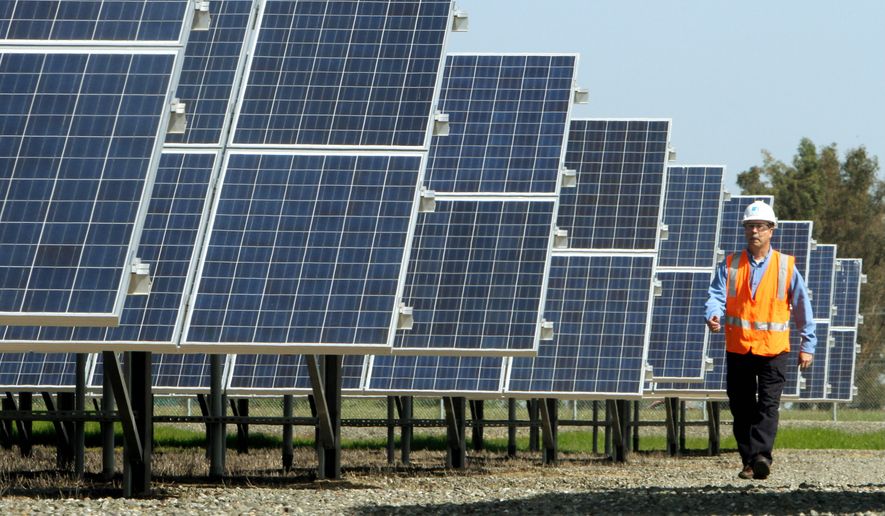SAN FRANCISCO (AP) — California’s largest utility, Pacific Gas & Electric Co. may have violated state rules by negotiating with state regulators earlier this year to have a judge that PG&E preferred appointed to decide one of the utility’s rate cases, an administrative judge with the state’s public utilities commission said in a notice to PG&E.
Hallie Yacknin, an administrative law judge with the California Public Utilities Commission, in an order late Wednesday directed PG&E officials to appear before her Oct. 7 to address whether the utility should be held in contempt of commission rules barring that kind of communication between the utility and the commission that regulates it.
PG&E faces unspecified financial penalties if found in contempt for the lobbying effort, Yacknin wrote in the order, without elaborating. Keith Stephens, a spokesman for the utility, said Thursday that PG&E officials were reviewing the judge’s order.
The developments are the latest in disclosures that critics say show excessively close relations between PG&E, one of the country’s largest utilities with $814 million in net profit last year, and government officials charged with regulating it. The disclosures involving the California Public Utilities Commission stem from investigations into a 2010 explosion of a PG&E gas pipeline that killed eight people in the San Francisco suburb of San Bruno. A National Transportation Safety Board report on the blast cited allegedly lax oversight by the public utilities commission as a factor in the 2010 disaster.
On Monday, PG&E released a new series of emails from January in which PG&E executives sought - and obtained -the administrative law judge they wanted in an unrelated rate case. The president of the state utilities commission, Michael Peevey, and another commissioner, Michael Florio, also were included in the January email negotiations over the judge selection, the emails released Monday showed
The state utilities commission said in a statement on Monday that Peevey’s chief of staff had resigned over her role in the emails. On Thursday, however, commission spokesman Christopher Chow said Brown remained an employee of the commission, and had resigned only as Peevey’s chief of staff. Chow said Thursday he could not immediately explain why the commission initially offered a different account of Brown’s employment status.
In another development involving the utility on Thursday, the Nuclear Regulatory Commission’s inspector general has been notified of a claim that the agency and PG&E “improperly worked together” before each released information on the same day that defended the seismic safety of California’s Diablo Canyon nuclear power plant.
Environmental and anti-nuclear groups have petitioned for the release of government records to determine if PG&E and the NRC had been collaborating to blunt recent disclosures about possible earthquake risks at the plant. The groups have provided no evidence that such collaboration occurred.
On Sept. 10, the NRC rejected a federal expert’s recommendation to shut down the plant until the agency can determine if its reactors can withstand powerful shaking from nearby faults. On the same day, PG&E released hundreds of pages of research and said in a statement that the plant remains seismically safe and able to withstand the largest potential earthquakes in the area.
NRC spokeswoman Lara Uselding said in an email that “we know of no collaboration” between the NRC and the company in the timing of the release of the information.
“However, we take these matters seriously and the NRC staff itself has referred the matter to the agency’s inspector general,” she added. There was no immediate response Thursday from PG&E officials to that charge.
Michael Peck, who for five years was Diablo Canyon’s lead NRC inspector, said in a confidential report disclosed by The Associated Press last month that no one knows whether the plant’s equipment can withstand strong shaking from nearby faults - the potential for which was realized decades after the facility was built.




Please read our comment policy before commenting.